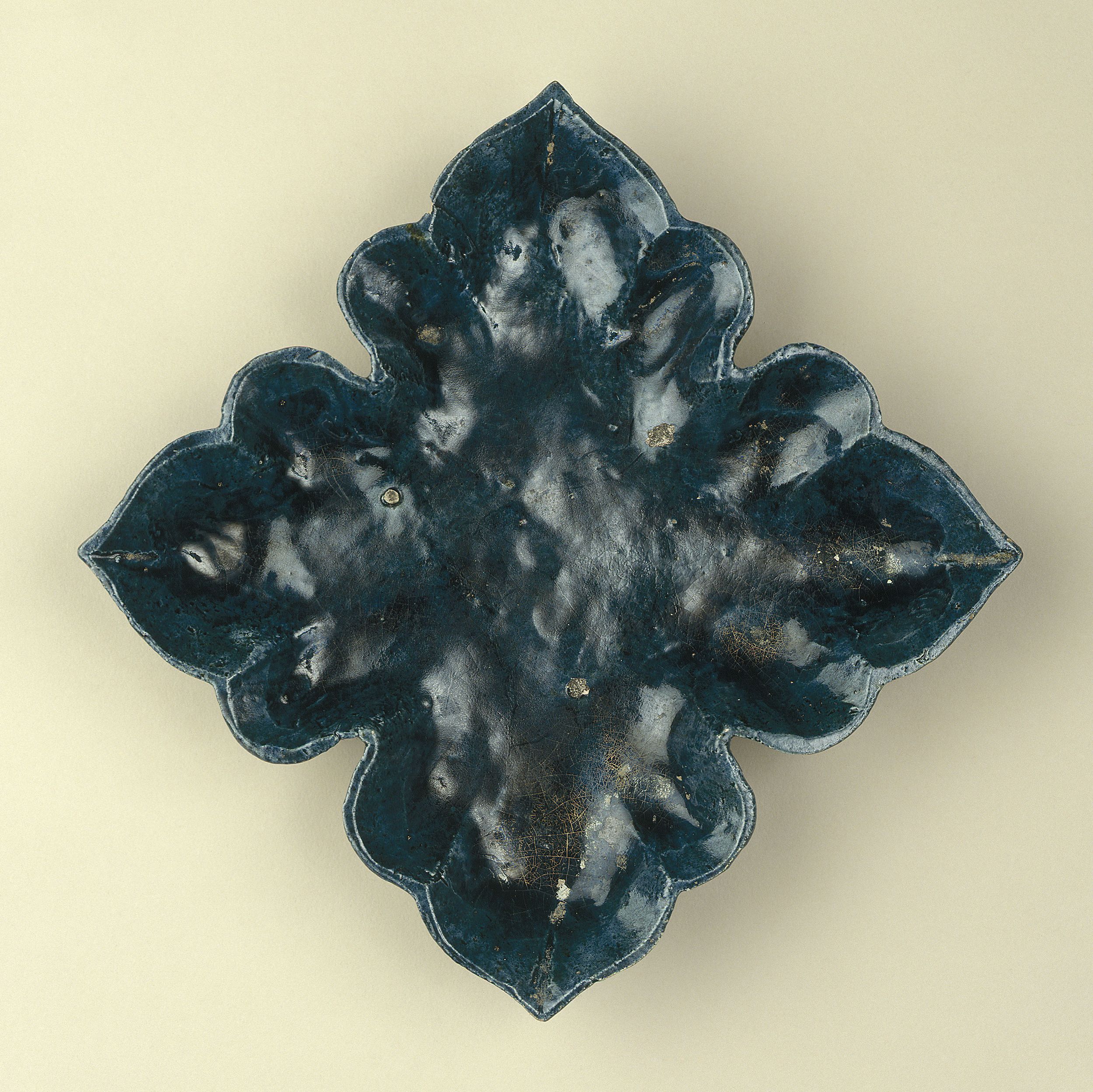
Plat
Entre 618 et 907
Terre cuite, Glaçure plombifère
Plat
Don manuel : Deydier, Christian; Deydier, Agnès
Terre cuite, Glaçure plombifère
Plat
Don manuel : Deydier, Christian; Deydier, Agnès
M.C. 9938
In the late 7th century and 8th century, workshops in the Henan province produced leaf-shaped dishes obtained by casting, as sharply shaped as pieces of metalwork. Three of them were once owned by the Ervika Foundation. The Meiyintang Collection boasts another.
This dish has a cobalt-based blue glaze containing arsenic. The use of this rare product originating from Iran, brought to China via the caravan trade, is attested from the early 8th century; however, the troubles that ravaged the Tang empire (618-907) from 775 caused it to be used much more rarely. There is a dish that is similar, but with feet, in the Museum Rietberg in Zurich. Another one, also with a blue glaze, came onto the New York market some thirty years ago.
Reference(s) : Christian Deydier, Arts de la Chine et de l'Himalaya (XIVe siècle av.J.-C. - XVe siècle apr.J.-C.), Paris Londres, Oriental Bronzes, 1997, p.26-27, n° 7.
Gilles Béguin, Activités du musée Cernuschi, Arts asiatiques, 1998, t.53, p. 89.
Christie's , 4 déc. 1998, p.98-99, n°63-65
Regina Krahl, Chinese Ceramics from the Meyintang Collection, vol.1, p.148, n°254.
William Watson, La céramique Tang et Liao, Fribourg, Office du Livre/Paris, Vilo, 1984, p.160, n°139.
James J. Lally, Chinese Works of Art, New York, 1988, n°48.
Gilles Béguin, Activités du musée Cernuschi, Arts asiatiques, 1998, t.53, p. 89.
Christie's , 4 déc. 1998, p.98-99, n°63-65
Regina Krahl, Chinese Ceramics from the Meyintang Collection, vol.1, p.148, n°254.
William Watson, La céramique Tang et Liao, Fribourg, Office du Livre/Paris, Vilo, 1984, p.160, n°139.
James J. Lally, Chinese Works of Art, New York, 1988, n°48.